As the U.S. Department of housing and Urban Development (HUD) established public housing programs for low-income families, the elderly, and persons with disabilities, public housing by definition must be affordable for its residents. But not all public housing is also sustainably designed.
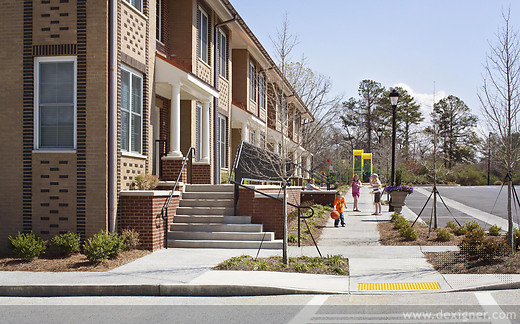
Village Green, a new, energy-efficient,10-unit public housing project for the Northwest Georgia Housing Authority (NWGHA), will save its residents money and is expected to achieve Enterprise Green Community Certification, Energy Star certification and LEED for Homes Silver certification. It will also be the first public housing authority project in Georgia to become LEED certified.
“It’s important to understand that sustainable design is achievable without having to add significant cost and complexity to a project,” said Jay Silverman, project manager at Lord, Aeck & Sargent, which designed the multifamily building. “For us, however, it wasn’t about meeting LEED or other performance standards; it was about incorporating sustainability as a way to improve the quality and livability of the apartment homes and to lower operating costs for the residents and client while staying within our budget. By saving on operating costs, the Housing Authority can use its annual budget to provide better resources and programs.”
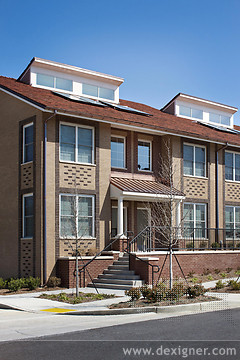
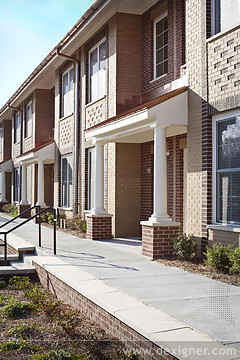
Sandra Hudson, the NWGHA’s executive director, concurred, noting that Lord, Aeck & Sargent was challenged to stay within budget while bringing sustainable design and quality to the building. “Our residents struggle to pay their utility bills, so living in a green community will help by reducing their expenses.”
Village Green was primarily funded by an American Recovery and Reinvestment Act competitive grant of $1,732,504 from HUD. The NWGHA provided an additional $350,000 from its annual operating budget for improvements to the site.
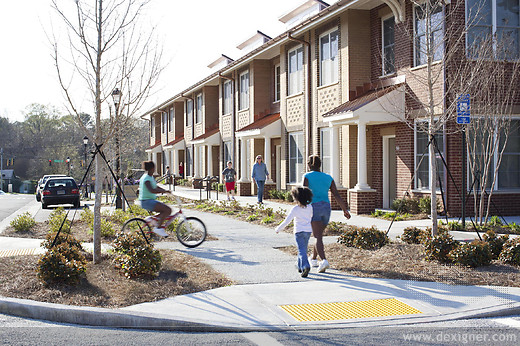
Energy- and Water-saving Strategies Benefit Residents and OwnerVillage Green features a host of green design strategies and products that will help its residents save on energy and water costs and live a healthier lifestyle. Among them are:
- The building‘s north/south site orientation maximizes daylight and minimizes solar gain- South-facing roof monitors provide light for the stairwells, and north-facing roof monitors harvest daylight for the bathrooms, reducing the need for electricity during daylight hours- Shading strategies include roof overhangs and copper porch roof canopies- Units are designed for cross ventilation, and all reachable windows are operable and have screens- Solar thermal hot water heaters in each unit reduce water heating costs- Spray foam insulation was used in the walls and roof. Wood trusses in the roof, andadvanced framing, minimize material waste and maximize the amount of insulation in the walls as well as the performance of the insulation- All units feature:– Fiberglass double hung, low-E insulated windows,– Energy Star qualified lighting, ceiling fans and appliances,– Low-flow water fixtures and WaterSense toilets, and– Low VOC finishes for healthier indoor air quality
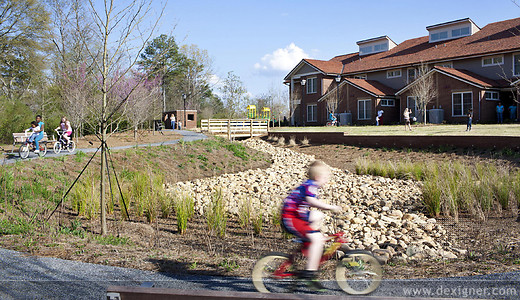
In addition, the NWGHA will save on operating costs and saved on construction costs through design features such as park space in the back of the building that includes a bioswale and detention pond; the park space features Xeriscaping, or landscaping that utilizes native, drought-tolerant plants that don’t require irrigation. During the construction phase, brick was locally sourced from central Georgia, and the building‘s roof used mostly clay tiles that were reclaimed from a NWGHA building undergoing demolition.
“Village Green was a great opportunity for Lord, Aeck & Sargent to combine the firm’s legacy of sustainable design with our recent public housing work for the Atlanta Housing Authority, student housing work for our university clients, and our best practices in the private multi-family housing marketplace,” said Eric Brock, principal in charge of the project for Lord, Aeck & Sargent.
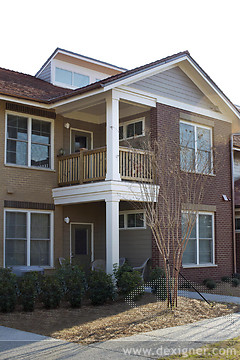
Design Informed by Rome’s Historic CharacterWhile sustainability was a key goal in creating Village Green, the quality of the design itself was also of major importance.
“Our design responds to the traditional townhouse-style character of the surrounding development and also to the character of Rome’s historic district,” Silverman said. “The fine masonry detailing of the historic buildings informed the building‘s brick accent pattern, which we achieved by using dark red, light red and dark brown brick to create an exterior that gives character and energizes the faade without significantly impacting construction or costs. This gives Village Green the human scale, warmth and sense of durability we found in the brownstones.”
Building design also includes decorative accents such as copper gutters and downspouts, pre-cast concrete sills and site wall caps.
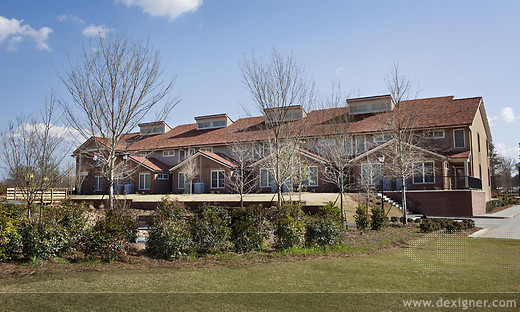
The site itself is designed to create an urban neighborhood feeling. Sidewalks, crosswalks and the park – which is usable by Village Green residents and those of a nearby apartment community – connect the building to the surrounding development. And although there is resident parking on either side of the building, the front is designed with parallel parking for guests, activating the neighborhood streetscape. An elevated sidewalk, designed to meet accessibility requirements for disabled residents and guests, functions similarly to traditional neighborhood stoops.
The building includes eight 1,450-square-foot townhouse-style, two-story walk-up units with three bedrooms and two baths each; and two 1,150-square-foot, two-bedroom stacked flats, one of which was designed according to the Uniform Federal Accessibility Standards, a standard for the construction of government buildings under the Americans with Disabilities Act.
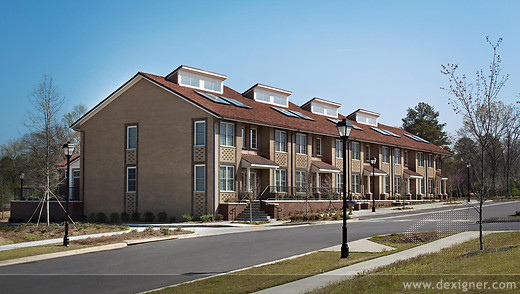
Room to GrowThe Lord, Aeck & Sargent design team situated the building on the nearly-2.5-acre site so that there would be room for a second building.
“There is space for 10 more apartments on the site,” the NWGHA’s Hudson said. “We don’t have the funds for that right now, but we hope for another grant in the future to allow us to add those units.”





